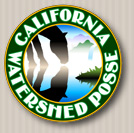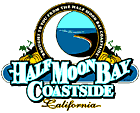

The No MROSD SMC Coastal Annexation Alternative Petition
Project:
Mid-peninsula Regional Open Space District Draft Service Plan For San Mateo County Coastal Annexation Area:
``The act of annexation is a legal and administrative change to the District's boundary and does not itself produce an environmental effect..
The District Board and staff chose to have an Environmental Impact Report prepared to ensure a very thorough analysis of potential environmental issues and public concerns raised during the scooping process. The annexation of the San Mateo County coast, adoption of the Service Plan, adoption of an annexation policy for the Coastal Annexation Area, and an adoption of a willing sellers only ordinance is the proposed project."(MROSD doc R-02-82,Meeting02-12,June 12,02)
California Environmental Quality Act ``CEQA"
- ``The foremost principle under CEQA is that the Legislature intended the act to be interpreted in such manner as to afford the fullest possible protection to the environment within the reasonable scope of the statutory language."
- ``It's purpose is to inform the public and its responsible officials of the environmental consequences of their decisions before they are made. Thus , the EIR protects not only the environment but also informed self-government."
- ``The core of an EIR is the mitigation and alternative sections. The Legislature has declared it the policy of the State to ``consider alternatives to proposed actions affecting the environment."
- ``The purpose of an EIR is ....to list ways in which the significant effects of such a project might be minimized; and to indicate alternatives to such a project."
- ``....the Legislature has decreed that local agencies shall be guided by the doctrine of feasibility. It is the policy of the state that public agencies should NOT approve projects as proposed if there are feasible alternatives ...``
- ``CEQA Guidelines, which state that EIR must describe a range of reasonable alternatives to a project, or to the location of a project, which could feasibly attain the basic objectives of the project, and evaluate the comparative merits of the alternatives."
- ``As the underscored language suggests, project alternatives typically fall into one of two categories; on-site alternatives, which generally consist of different uses of the land under consideration; and off-site alternatives, which usually involve similar uses at different locations."
- ``Each case must be evaluated on its facts, which in turn must be reviewed in light of statutory purpose. Informed by that purpose we here affirm the principle that an EIR for any project subject to CEQA review must consider a reasonable range of alternatives to the project or the location of the project which (1) offer substantial environmental advantage over the project proposal, and (2) may be ``feasibly accomplished in a successful manner" considering the economic, environmental, social and technological factors involved"
CEQA Requires Due Diligence Review of the Findings of Fact
The Mid-Peninsula Open Space District, as stated above, is proposing a legal annexation of the coastal area of San Mateo County. They have drafted a ``conceptual" Service Plan that only describes the ``conceptual purposes and goals" of their coastal annexation proposal while listing the obvious environmental risks and conceptual mitigation schemes. CEQA requires that MROSD must first develop and adopt a real Coordinated Resource Management Plan aka CRMP for their San Mateo County Coastal Annexation proposal before being reviewed under CEQA. The standard of review under CEQA is that the ``Preferred Alternative" is selected after a due diligence review of the ``Findings of Fact" regarding environmental impacts. It is impossible to have a ``Finding of Fact" for a hypothesis or conceptual plan. CEQA requires: ``Each case must be evaluated on its facts, which in turn must be reviewed in light of statutory purpose. Informed by that purpose, we here affirm the principle that an EIR for any project subject to CEQA review must consider a reasonable range of alternatives to the project or the location of the project which (1) offer substantial environmental advantage over the project proposal, and (2) may be ``feasibly accomplished in a successful manner considering the economic, environmental, social and technological factors involved".
Findings of Fact Regarding the San Mateo Coastal Rural Watershed
Long years without a major wildfire have allowed a serious buildup of biomass that could, according to the California State Auditor's SFPUC February 2000 Report, fuel a catastrophic firestorm in a region that lacks a rapid fire response capability enjoyed by most inner-city fire departments. A major wildfire driven by blazing hot Diablo winds could explode over and beyond the eastern facing slopes above the Hetch Hetchy reservoirs only to be stopped at our coastal waters edge after stripping the groundcover of its ability to hold back soil and long hidden pollutants when the heavy rains come. The last major wildfire in this SMC RCZ watershed occurred in 1946 which resulted in reduced capacity of the reservoirs because of the vast sedimentation that followed the fires. The GGNRA Fire Management Plan records describe the damaging 1946 wildland fire as having lasted for six weeks, completely burning down the small coastal community of Montara. The Half Moon Bay Fire Protection District alerted SMC RCZ coastal communities in 2002 that all the conditions that caused the disastrous 1946 wildfires currently exist in our coastal watershed. Unfettered public access, high temperatures, blazing hot winds, steep hills, excessive wildland vegetation, drought affected plants, narrow roads, slow wildland fire detection and densely populated wildland /urban interface (WUI) area neighborhoods all contribute to firestorms.
Coastside Fire Safe Council Findings of Fact
MROSD states in their 2001/2002 annual report that they spent 1% of their revenues for resource management and annexation (approximately $280,000). MRSOD has NO adopted CRMP for their current 46,000 acres holdings and all resource management is conducted under adopted ``policies". NO CRMP for their Coastal Annexation Proposal. NO Experience in managing Rural Lands or Communities. No funding scheme to support their Annexation concept. NO adopted finding of fact for their conceptual Service Plan. The Board of Directors for the Half Moon Bay Coastside Fire Safe Council have adopted the above finding of fact and has declared the NO ANNEXATION ALTERNATIVE as the most protective and least environmentally damaging to our coastal communities. Protect California Future by signing this petition for the CEQA mandated NO ANNEXATION ALTERNATIVE.
 |
|
the Half Moon Bay Coastside Foundation's |
|
California Watershed Posse |
|
YOUR MISSION | CRMP SERVICES | CWP PROJECTS | CWP LINKS | THE PEBBLE |
|
1589 Higgins Canyon Road Half Moon Bay, California. 94019 |
|
| |||||||||||||||||||||||||||||||||||||||||||||||||||||




